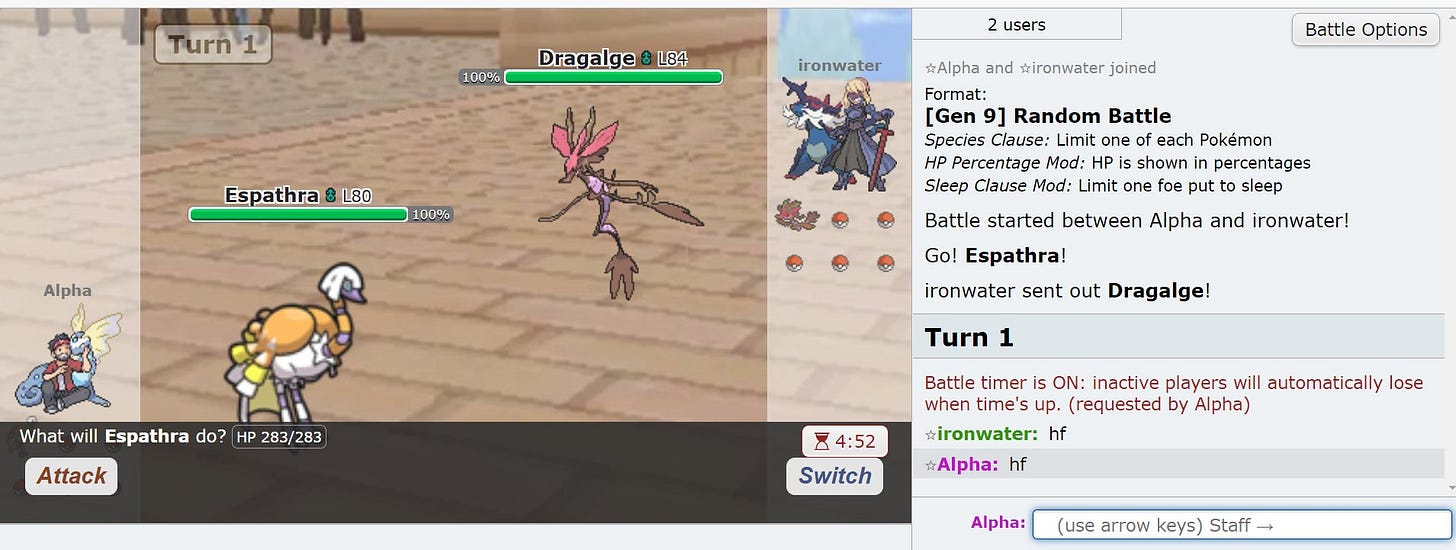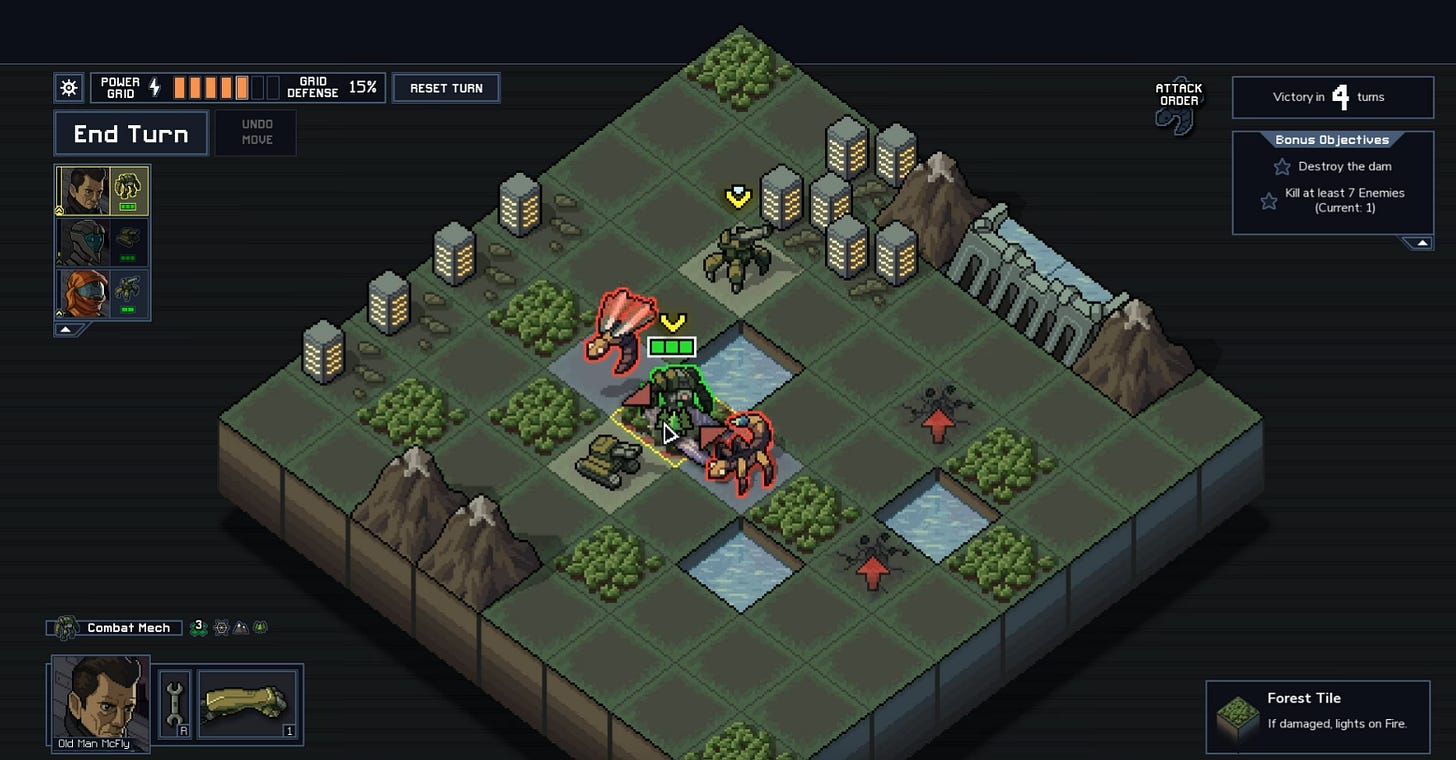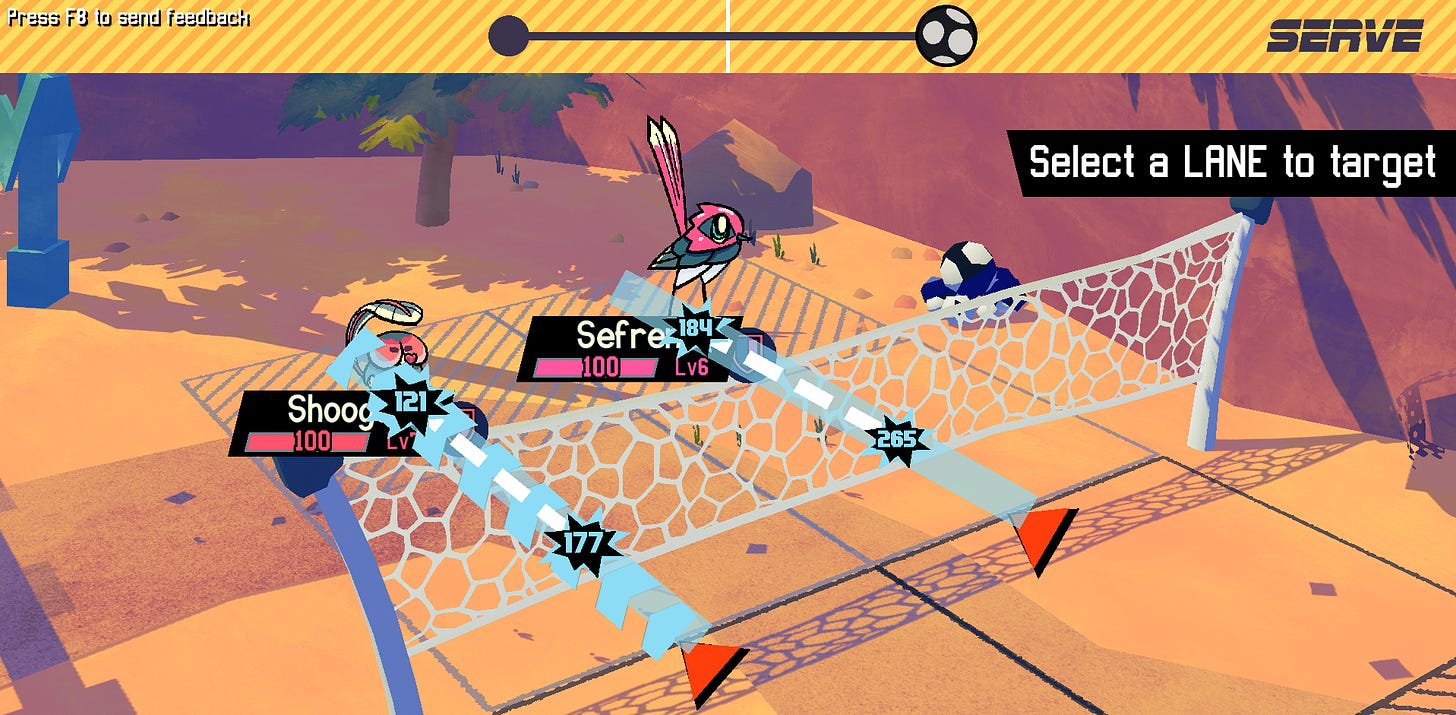Hidden information has got to be one of the coolest trenches to explore in the vast sea of game design study. Put simply, it’s the information you don’t know in a game. In many card games, every player knows what’s been played on the board, but won’t know what’s waiting in their opponent’s hands. Chess is famous as a game with “no” hidden information… although partly what’s made the game thrilling for thousands of years is the fact that you can never know what’s going on in your opponent’s head.
It’s also a design topic that’s often invisible to players, because when the game isn’t presenting info to you, you don’t know that you don’t know it. What information is and isn’t visible to a player fundamentally shapes their experience of that game… in a certain light, all game design comes down to this subject in some way or another.
I had to dig deep into this trench as part of the design process for Beastieball!
Beastieball’s design lineage is mostly from JRPGs, like Pokemon, which are generally very “squishy,” creating lots of space for minor statistical variations that make every player’s experience feel unique. One of the simple ways that surfaces is in damage calculation. In most RPGs, like Final Fantasy, Pokemon, Chrono Trigger, Earthbound, or heck, even Dark Souls… dealing damage can feel a bit like a slot machine, where the player inputs an attack, and then finds out how much damage their attack resulted in. Often there’s a bit of randomness added in, so that the same character hitting the same enemy over and over produces varying amounts of damage with each swing.
This way of revealing the damage dealt is another form of hidden information, and one which contributes to the fun of those games. In Pokemon, for example, you’ll learn to intuit how much damage your attacks will do, being able to predict for example that your super-effective fire attack will probably take down the opposing grass-type in one hit. In high-skill Pokemon competitions, players compete with a vast amount of knowledge and intuition, being able to identify almost exactly how much damage any interaction between any two Pokemon will have - indeed, this ability to accurately foresee the outcome of any given attack is often what makes the difference between victory and defeat. Not to mention all the various “surprise” events that can occur which players also have to account for, like critical hits.
While understanding that this huge space of hidden information is part of what makes these games enjoyable, I really wanted to go in a different direction with Beastieball. Surprise is fun, but it’s also opaque; it’s frustrating when you lose to something you simply couldn’t see coming, like an unexpected critical hit, or a mysterious interaction with an enemy ability you haven’t seen before. More hidden information also means players spend more of their early experience with the game feeling lost and confused, not yet knowing how or why things are happening, and more than anything I wanted Beastieball to be accessible to new players.
This speaks to a trend I’ve observed with a lot of recent high-profile, designer-friendly games like Slay the Spire or Into the Breach. In the above Breach screenshot, while the player is selecting their actions for their turn, they can already see red arrows indicating exactly what every enemy will do; the two bugs highlighted in red will attack a player unit, and two new enemies are about to come up from underground on the right side of the board. Players are allowed to strategize their actions however they want already knowing exactly what their opponent will do. It creates a satisfying, crunchy space almost more akin to a puzzle game than a strategy game.
Of course, these games are brilliantly and carefully designed to exclude just the right amount of info, too; for example, you don’t know WHAT enemies are going to pop out of the ground, nor is it obvious that the opponent insect attacks will also light the forest under your feet on fire. Tell the player too much and the game feels disorienting with info, or perhaps hyper-linear, leaving no space for surprise, discovery or creativity.
Unlike Slay the Spire or Into the Breach, Beastieball needed to support player vs. player as well as single-player encounters (a totally separate rabbit hole for other articles…). This meant that we couldn’t outright tell the player what their opponent was going to do, because part of the fundamental design is that their opponent might be another player who is deciding their next action at the same time. But I did go out of my way to reveal as much as I could, down to revealing exactly how much damage any given attack will do before the player commits to it - and being able to see how much damage opponents can do to them, too.
Beastieball is still full of hidden information, though, most especially in the form of opponent actions. For example, while you might see your attack will do 100 damage when it lands, what you might not know is that your opponent is about to boost their defenses right before the attack connects, or put up a shield, negating the predicted damage. Players are allowed to see what all of their opponent’s options are, but they don’t know which one they’ll select, and this gap of knowledge leaves enough space for a universe of mind games that makes the game enriching and surprising.
A seredipitous result of this is how different single-player and multiplayer feel in Beastieball. For an average player, the game’s depth of options usually means it’s a challenge to find the “best” choice, and that makes for fun encounters that feel almost puzzle-like from turn to turn. But the opponent AI is quite logical, which means it’s usually quite predictable, effectively negating the existence of any hidden information. Opportunistic players can take advantage of that to claw a victory out even when they’re quite underpowered - I expect to see speedrunners crack the story mode wide open someday. Opponent players are a totally different beast, though - they can act intentionally unpredictably, creating surprising and chaotic matches where victory and defeat often come down to figuring out not what’s on the board, but what’s going on in your opponent’s head.
As with everything, there’s no “correct” way to design hidden information. It’s a problem with as many unique shapes as there are games. But I certainly had fun challenging myself to explore it further with this game.




